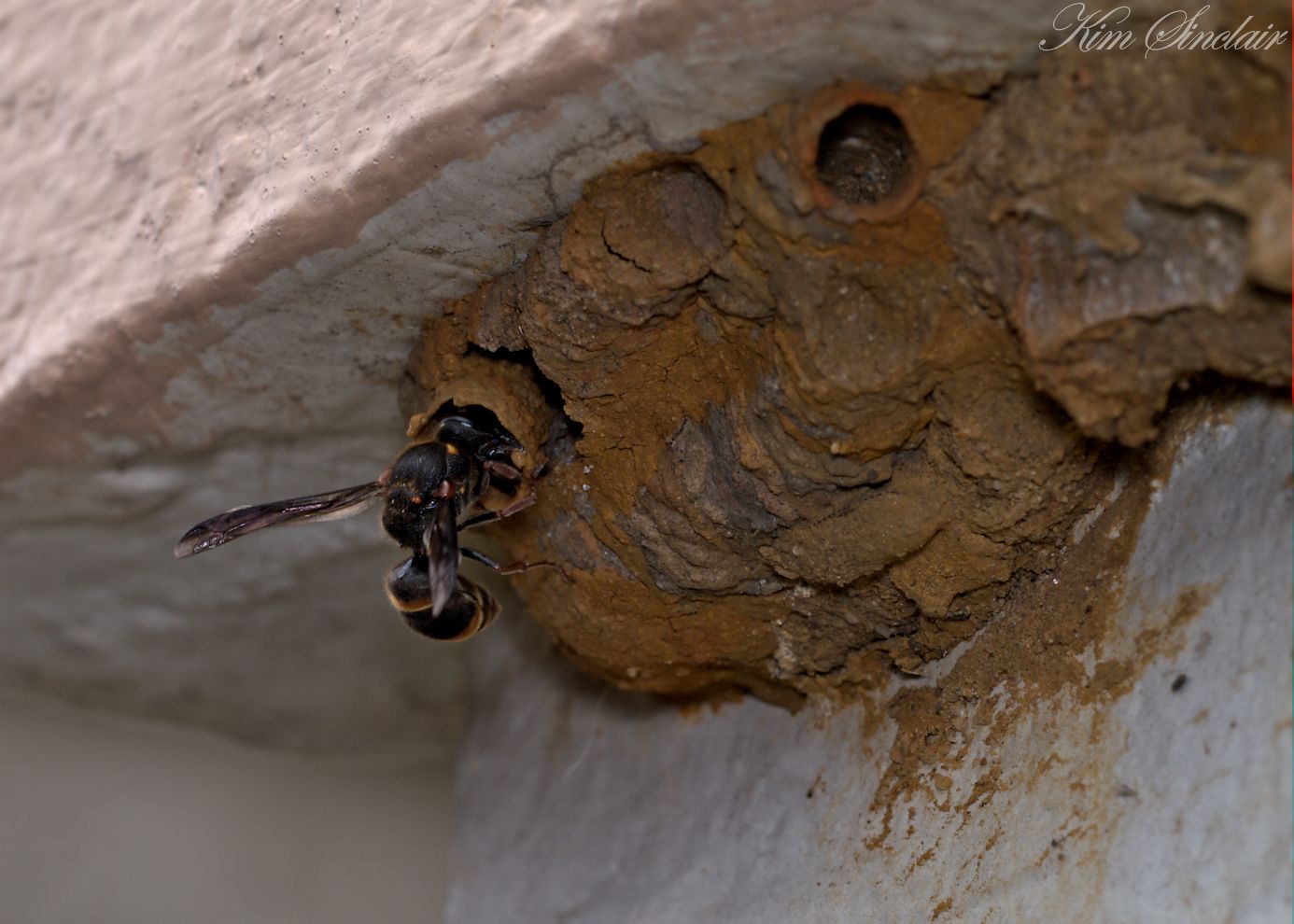Firstly, my apologies for letting this go for those who have been interested in my posts. Sometimes real life just gets in the way and the energy required to put into a BLOG is not there. It is hard to explain but sometimes the task seems overwhelming when there are other life issues using up your energy so I decided not to stress and let it go until I felt ready to go on. I even considered abandoning it then the passion for all things tiny and small got the better of me and I just have to share them.
So I have a bit of catching up to do because I was still taking photos and observing life in the microcosm. And now I am going to try to give you a glimpse of some of it.
The most fascinating thing from last summer to me was the mud wasps that were building a nest to lay their eggs on a veranda pillar near the Hydrangeas. I desperately wanted to see more and capture it to share but without setting up camp below the nest, I had to take my chances when I could to see the wasp going in and out with blobs of mud to extend and strengthen the nest. These wasps catch either spiders or caterpillars and stock the nest where the eggs are laid with paralysed prey for their offspring to feed on. I didn't get to see them taking in prey so am not sure what the food of choice is for this species.
 |
| Mudwasp nest with a tunnel being repaired after rain washed some of it away . |
 |
| Wasp working on extending the tunnel with some fresh mud. |
|
|
 |
Wet mud around the entrance shows where the wasp has been working.
|
|
|
 |
Different coloured layers show the progress as it occurred.I think it is very interesting that this is not the soil colour in my garden. I have no idea where this mud is obtained but presumably the wasp has to carry it quite a distance to the nest. How on earth do they do that? (Excuse the pun)
Wasp on extended tunnel
|
|
|
|
|
|
|
|
|
|
|
|
|
| |
 |
| Once long enough and set hard, the wasp places paralysed prey inside the nest. | | | | | | | |
|
 |
| Finally, she backs down the tunnel and lays an egg in the nest. I think it might be one egg per chamber or cell. You can see the sealed off cells in this nest. |
|
|
|
Although wasps are predators, they also are prey and this nest was constantly threatened by a spider which built its web at the end of the nest and which occasionally spread over further. It was nearly covering it once the nest was sealed up and not visited any more which I am guessing was cleverly done to catch the emerging wasps. I did see one dismembered wasp of this species in the web once.
 |
| Spider web covering part of the wasp nest. |
|
|
 |
| The spider won this round; one of the mud wasps didn't get past the spiders web and ended up being dinner. |
One day I saw a wasp go into the crack in the door of our electric meter box and when I opened it up I found another mud nest that it was visiting.
 |
| Mud wasp nest on the inside of the door of our electric meter box. |
 |
| Wasp at the nest inside the meter box. |
This season, I have found a new mud wasp nest way up high under the eaves at the back of our house. I haven't seen the wasp visiting as yet but it is not quite as handy to notice or photograph as this one was.
So why do wasps travel distances to bring mud so they can make a nest outside my house? My theory is that because we do not use pesticides, there is abundant prey here and they would rather be closer to prey than to building materials.











Fascinating stuff - especially those different coloured types of earth used. I know nothing about mud wasps so no idea there. I do love though the fact that these wasps may be predating on spiders to feed their offspring yet other spiders are around to predate on the wasps! Great photos, Kim!
ReplyDeleteThanks Mandy. I knew you would find it interesting. They are a good looking wasp too. Not as nasty looking as some. ;)
Delete